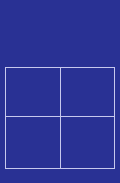It is a very slow process that requires a good proportion of patience. Next phase happens in the loom. There, the hank which has been properly tightened is coiled in the folding machine of warp where threads to the height of the comb are cut and threaded patiently one by one. Every time you must observe the work is being made correctly. It is initiated the work of a weave in the strict sense. Now, the full of thread bobbin is introduced in the shuttle and with a movement combined between the hands and the feet, the thread crosses the separated warp by the meshes.
The combination of weaves and the variety of drawings require much experience and knowledge of the craft.
The dyeing of weaves, that is to say the application of a colouring to a weave by immersion in a solution, is a technique that has been purified by this craftswoman of Triste. It obtains dyes with vegetal products like roots, stems, leaves and flowers she dries properly in a room of her house. The red color is obtained from a parasite of this color that only can be found in the Canary Islands. We are talking about the woodlouse.
For the coloration of weaves it used rainwater because the water of the faucet does not serve becuse it is polished. In order to assure all necessary rainwater to manufacture weaves, her husband constructed a tank where rainwater will be stored.
The work of this craftswoman is not only in the walls of some houses but that it crosses cultural acts, medieval markets and fairs of crafts. With her particular collection of works she has been making, this craftswoman with the aid of her husband has built a mini museum of the loom and of the textile crafts in her own house. This museum is not opened to the public but she has no objection in showing it all travellers who approach until the locality of Triste.













